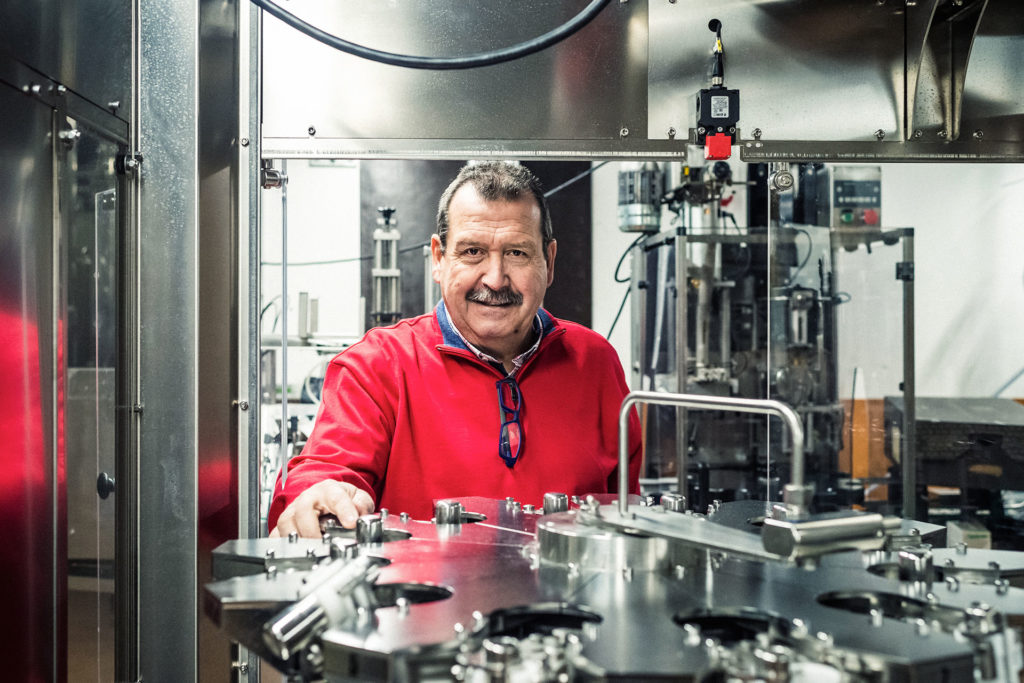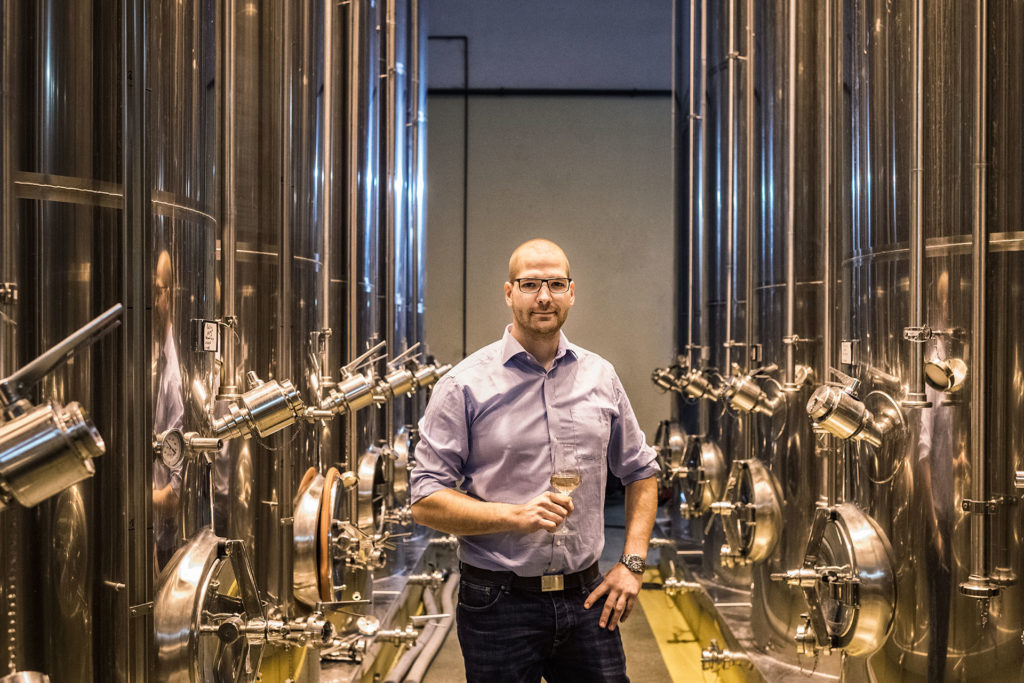Marking a natural border between Luxembourg and Germany,the Moselle river winds for 42 kilometers past steep vinyards. Luxembourg’s wine-growing region, at just 1,300 hectares, makes it a small player compared to the wine growing regions of its neighbours. Nevertheless, Luxembourg wine growers have developed exceptional still and sparkling wines that enjoy an excellent reputation amongst wine connoisseurs.

Our wines are characterised by a certain fruity acidity,” says Erny Schumacher, President of Luxembourg’s Association of Private Wine-makers and himself a fifth generation wine-grower.
“You don’t find that liveliness in other wine regions. We do not try to reduce acidity, we leave it in. This lack of manipulation is exactly what’s bringing the lively flavours”. As a result, Luxembourg wines regularly bring home international prizes, such as the Berlin Wine Trophy and Mundus Vini, and are frequently lauded in the popular buyer’s guide, the Guide Hachette des Vins.

You don’t find that liveliness in other wine regions.
To achieve this typical taste, the majority of Luxembourg wines are developed in stainless steel tanks. The variety of grapes is wide, comprising the Pinot Blanc, Gris, Noir and Auxerrois grapes, as well as Riesling, Elbling, Rivaner, Chardonnay and Gewürztraminer. 90% of the country’s wine production goes into white wines and only 10% into red.
COMBINING TERROIR WITH QUALITY
Moselle vineyards have two types of soil. The Southern Region is characterised by Keuper mixed with marl clay while downstream the Northern Region is shell limestone. The former stores more water, so that wines from the Southern Region have more earthy tones. Both soil types are particularly suitable for the growing of Pinot grapes and make for smooth and creamy, fruity flavours.
Luxembourg winegrowers are organised in two main associations: the above-mentioned private winemakers, which represents more than 50 private winegrowers, and a cooperative. The cooperative unites another 230 winegrowers who maintain their vineyards and harvest their grapes, but leave the pressing, aging process and bottling to the cooperative. It provides expert advice to its members by sending out cellar masters and wine consultants, so that only the best grapes go into the final product.

We only produce 8,000 liters per season and develop our wines in the Grands Premiers Crus range. Customers know they are having something exclusive.
In the olden days, when Luxembourgish wines were not very popular, a cooperative was important to gain a foothold in the market,” says Pit Leonardy, President of the cooperative Domaine Vinsmoselle’s group of young winemakers, the Jongwënzer. Today, Domaine Vinsmoselle exports more than 50% of its wines.
Leonardy represents a generation of winemakers that stands for wines of distinguished quality in small quantities. “We have our own range of wines. They are available at chosen restaurants and in our online shop, but not at intermediaries. We only produce 8,000 liters per season and develop our wines in the Grands Premiers Crus range. Customers know they are having something exclusive.”
NOT A PARTY WITHOUT CRÉMANT

A particular success story has been the Luxembourg Crémants, sparkling wines developed under strict rules that are enjoying huge popularity not only in Luxembourg, but also in Belgium and Germany. “Domaine Vinsmoselle introduced the Crémant method in 1991, after the French protected their champaign method and limited the use of the brand to the Champagne region. Crémant ferments in bottles and enjoys the same quality status as Crémant de France,” states Pit Leonardy.

We introduced the Charta ten years ago. Charta vines are cut differently and are pure natural wines that are neither deacidified, nor desugared. They only go on sale two years after harvest.
“Of 150kg of grapes, only 100 litres of juice can be extracted and the pressing has to rest on yeast for nine months”. Bottles are turned manually or placed on rocking consoles during the ripening process, making the yeast float into the bottleneck, which is later frozen and catapulted through carbonic acid pressure out of the bottle during a process called disgorging, before it is plugged with a cork stopper.
Several recognised labels encourage winemakers to produce high-quality products, most recently the AOP, the ‘Appellation d‘Origine Protégée – Moselle Luxembourgeoise’, a label introduced in 2016 to combine the principle of origin with high quality standards. The label is awarded by the Luxembourg government. “During harvest season, specialists from the government take daily must samples from each barrel which are analysed by the state laboratory for alcohol content, acidity, residual sugar and sulphur. Only completely faultless wines get the label,” says Mr Schumacher. Alongside the AOP label, the private winemakers have introduced their own quality charter.
“We introduced the Charta ten years ago. Charta vines are cut differently and are pure natural wines that are neither deacidified, nor desugared. They only go on sale two years after harvest.”

During harvest season, specialists from the government take daily must samples from each barrel which are analysed by the state labo - ratory for alcohol content, acidity, residual sugar and sulphur. Only completely faultless wines get the label.
Further specialties of the Luxembourg wine region are ‘Vendange tardive’ from late-harvested, sweet grapes, ‘Vin de paille’ from grapes dried on straw mats and ‘Vin de glace’, ice wine, which is harvested at -7 degrees and therefore has become a precious rarity. However in general, global warming has postitive impact on Luxembourg wines.

It is important that we all work together and promote the entire Moselle region as a wine-growing region, here in Luxembourg and internationally.
According to Mr Schumacher, winemakers “are in a constant process of gaining experience. Unfortunately with the sun, in recent years came also the rain and thus mould. We will have to learn how to tackle these challenges”. In the last two years, due to spring frost and fungus infestation, the entire wine harvest at the Moselle accounted for 83.000 hectolitres, which is 30% less than in previous times.
LOOKING AHEAD
Luxembourg is sensitive to biodiversity issues and has been practicing pesticide-free viticulture for 15 years. The use of pheromone traps has proven to be very successful. “The next challenge will be to become completely her bicide-free. This can’t be achieved overnight. We started last season and are currently trying out new machines which work the earth with tools, which of course requires significantly more work,” says Schumacher.
For Pit Leonardy, the main challenge lies in the promotion of Luxembourg wines: “It is important that we all work together and promote the entire Moselle region as a wine-growing region, here in Luxembourg and internationally.”

Nowadays, people are looking for something exquisite that’s not available at every corner supermarket. Luxembourg wines are predestined for these demands.
In this context, Luxembourg has one major advantage over other regional wine areas. 48% of the population consists of expatriates, many of them from countries where there is not a serious tradition of viticulture. “Expats living in Luxembourg are very open to our wines… Nowadays, people are looking for something exquisite that’s not available at every corner supermarket. Luxembourg wines are predestined for these demands,” concludes Leonardy.

